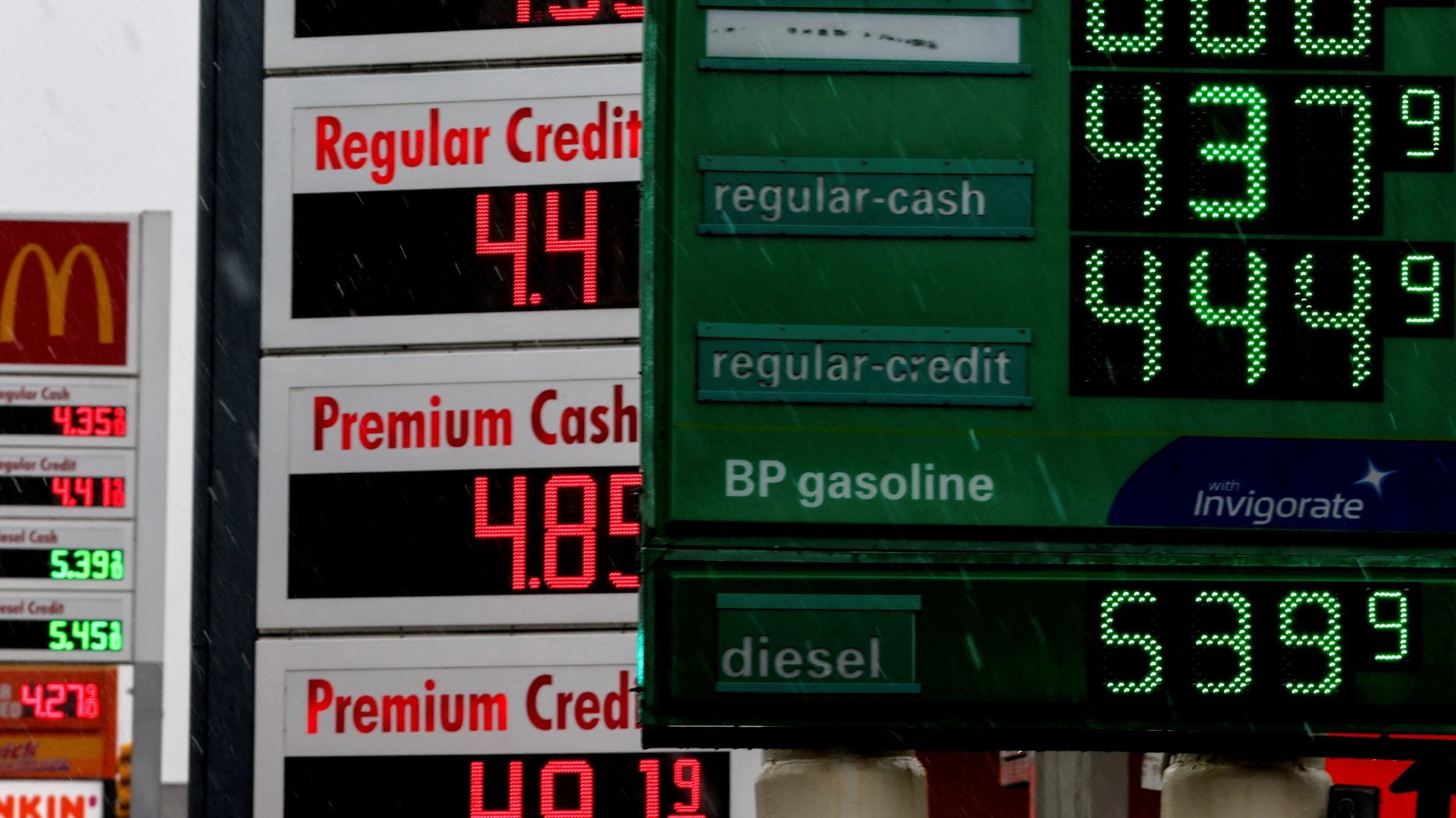3 ways the US can replace its Russian oil imports at the pump
Since US president Joe Biden announced a ban on imports of Russian oil on March 8, global oil prices have gone up. As a result, many Americans are seeing higher prices at the gas pump. The average gas price across the US reached $4.32 per gallon on March 10.


Since US president Joe Biden announced a ban on imports of Russian oil on March 8, global oil prices have gone up. As a result, many Americans are seeing higher prices at the gas pump. The average gas price across the US reached $4.32 per gallon on March 10.
This means Russian oil sanctions are already taking a toll on American consumers despite the fact that Russia isn’t even a major source of US oil imports. The US consumed roughly 245 million barrels of crude oil and other petroleum products from Russia in 2021, or 8% of its total imported supply.
This isn’t an impossible sum to replace. Unlike Europe, which gets more than a quarter of its oil supply from Russia, the US would be able to cover this gap relatively easily by exploring alternate sources to import from, or reducing consumption of oil and gasoline overall.
Getting oil from elsewhere
US officials are exploring the idea of sourcing oil from previously banned nations like Iran and Venezuela. Lifting sanctions on Iran could boost oil imports by half a million barrels per day within six months, while the arrival of Venezuelan oil could help tide over refineries in the Gulf Coast. But in the eyes of some US lawmakers, these modest supply increases may not be worth the political risk of engaging with adversarial countries.
Getting more efficient with gasoline use
Consuming less gasoline is one way for consumers to deal with rising prices. This is often easier said than done, as most Americans’ transportation needs haven’t changed. But there are efficiency gains to be made from something as simple as properly inflating car tires.
Underinflated tires can decrease a car’s fuel economy by as much as 10%, according to a 2014 Oak Ridge National Laboratory study. Even tires that are just 25% underinflated can decrease fuel economy by 3%.
If the tires on all of the US’s more than 261 million personal vehicles were inflated at 75% of the recommended pressure, filling them properly would increase fuel efficiency by 3%, and would save 212 million barrels of oil in a year—a little less than the US’s Russian imports in 2021.
Getting off of gas altogether
Advocates of alternative energy sources point to the Russia-Ukraine crisis as a case for reducing US dependence on oil entirely and embracing renewable energy like electricity. The clearest way for American consumers to do this is with electric vehicles.
Energy Innovation, a climate policy think tank, modeled (pdf) the effects on US oil consumption and found that every electric vehicle sold saves roughly six barrels of oil per year. Growth in EV sales driven by the type of tax credits proposed in the Biden administration’s not-yet-totally-dead Build Back Better plan would be enough to replace half of Russian imports of crude oil by 2025, and entirely eclipse Russian oil imports by 2027.
Even without tax incentives, EVs have gained popularity in the US in recent years. Though they still make up a small portion of the auto market, EV sales grew 83% in 2021.